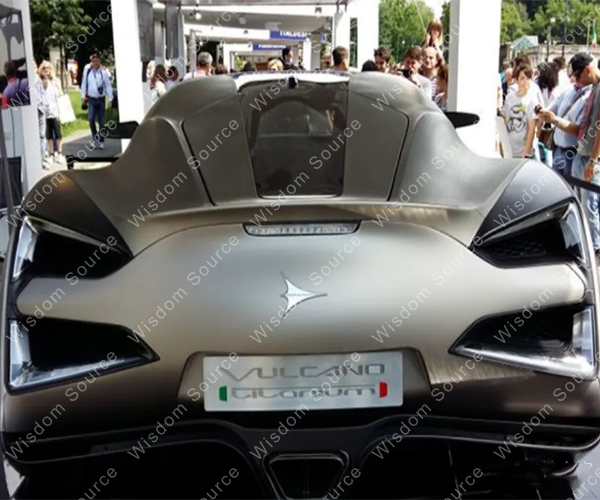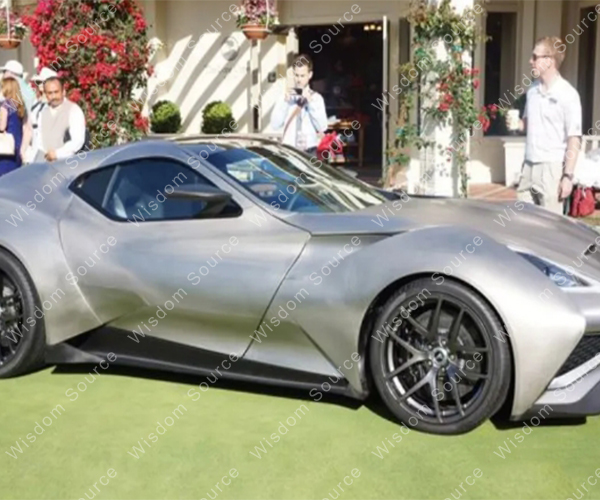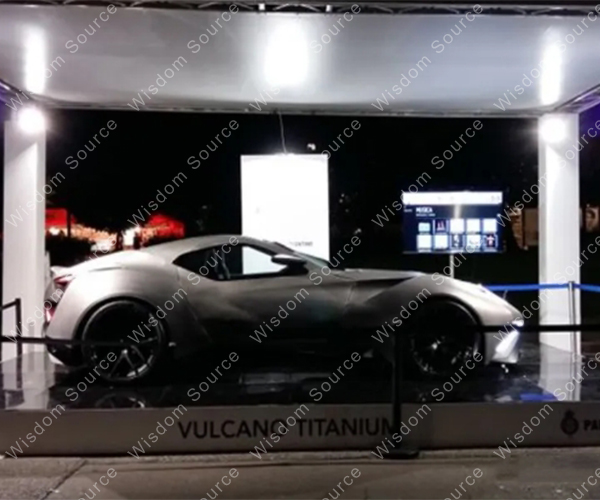China and Italy Strongly Unite The World's First All-Titanium Alloy Sports Car
China and Italy Strongly Unite The World's First All-Titanium Alloy Sports Car
1. Aviation-Grade Materials Subvert The Traditional Car-Making Process and Open A New Era Of Lightweight Supercar
Icona Vulcano Titanium, jointly built by ICONA, a top Italian design company, and the Chinese technical team, was recently officially unveiled. This supercar with an all-titanium alloy body as the core has redefined the technical boundaries of high-performance sports cars with the cross-era integration of materials science and automotive engineering.
2. Aviation Gene Injection: Titanium Alloy Reconstructs Supercar Bones
As the world's first production model with an all-titanium alloy body, Vulcano Titanium's design inspiration is directly derived from the aviation legend-the American SR-71 “Blackbird” high-altitude reconnaissance aircraft. Its body adopts titanium sheet metal that is homologous to the spacecraft. Through the hot stamping molding technology developed by the Italian CECOMP company, the titanium alloy sheet with a thickness of only 0.8mm is shaped into a body surface that combines streamlined aesthetics and structural strength.
The strength/weight ratio of titanium alloy reaches 3 times that of steel, so that the quality of the vehicle is controlled at 1590kg, and the torsional stiffness is increased by 40%. The unique corrosion resistance characteristics have completely solved the oxidation problem of traditional aluminum alloy car bodies, and the luster of the metal's primary colors can be maintained even in extreme climates.

3. The Material Revolution Drives a Leap In Performance
The lightweight advantage of titanium alloy directly empowers the power system: it is equipped with a 6.2-liter V8 supercharged engine adjusted by a team of former Ferrari engineers. On the basis of a 15% weight reduction in the titanium alloy body, it achieves a violent performance of 0-100km/h acceleration of 2.8 seconds. The increased rigidity of the body reduces the deformation amplitude by 22% during high-speed cornering. With the active aerodynamic kit, it still maintains excellent stability at a top speed of 355km/h.
The manufacturing team specially developed a titanium-carbon fiber composite structure, embedding a carbon fiber reinforcing layer in the stress concentration areas such as door hinges and suspension fulcrums, which not only retains the lightweight characteristics of titanium, but also enhances the durability of key parts through material synergy.

4. Hand-Forged Metal Artwork
More than 800 titanium alloy parts of the whole car need to be welded with argon protection at a high temperature of 980℃, and they are hand-polished and polished by Italian national treasure craftsmen. The body manufacturing alone consumes more than 10,000 working hours. The unique cold metallic texture surface refuses to be covered by traditional car paint, and through nano-scale mirror treatment technology, the body presents a very futuristic liquid metallic luster.
The interior of the cockpit continues the unity of materials. The barrel-shaped seat supported by the titanium alloy skeleton and the CNC-cut titanium pedal group form a closed loop of technical language from the outside to the inside. The instrument panel innovatively adopts a titanium alloy honeycomb sandwich structure, which realizes a 35% weight reduction of components under the premise of ensuring collision safety.

5. A milestone in Sino-Italian Technology Co-Research
The project gathers the joint research of the Materials Laboratory of the Turin Institute of Technology and the Institute of Light Alloys of Shanghai Jiaotong University to break through industry problems such as the brittleness of titanium alloys in cold processing and the variation of welding lattices. The gradient annealing process developed by the Chinese team has successfully increased the pass rate of titanium alloy sheet forming from 47% to 82%, laying the foundation for large-scale application.
Industry experts evaluated that Vulcano Titanium marks the official entry of the automotive industry into the era of titanium, and its material application experience will be fed back to aerospace, medical equipment and other fields, forming a cross-border technological radiation effect. The birth of this “land aircraft” is not only the crystallization of Sino-Italian high-end manufacturing, but also indicates that a disruptive material revolution is accelerating.
